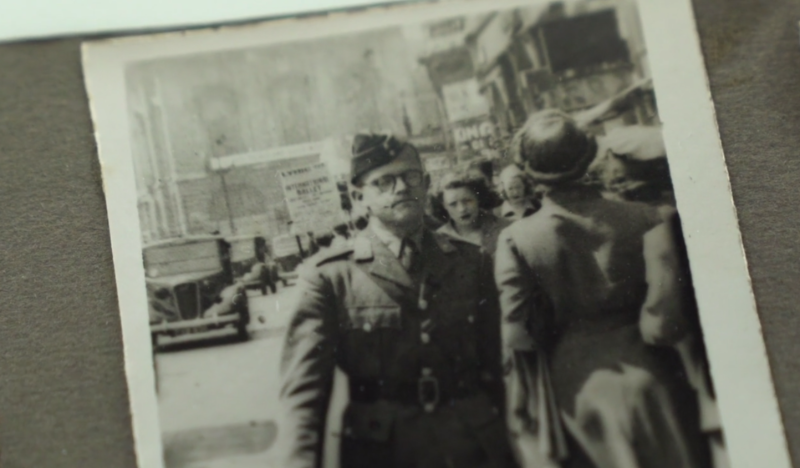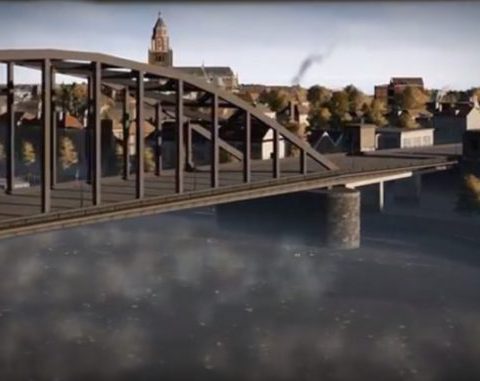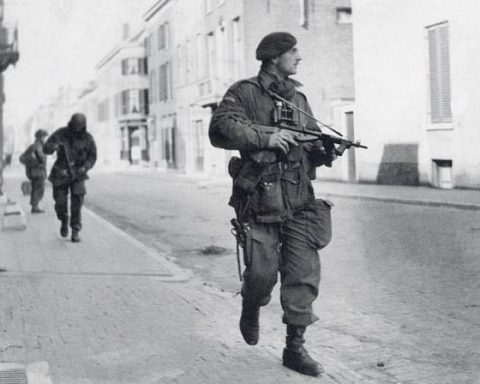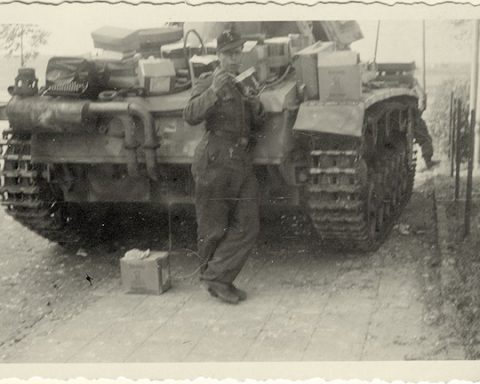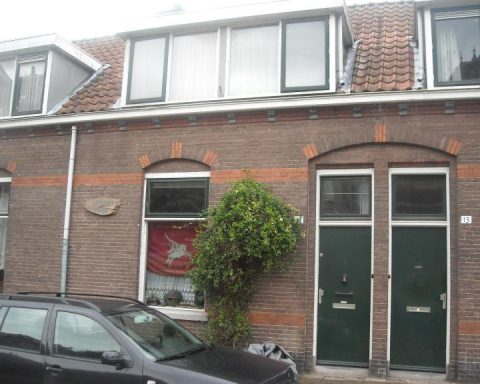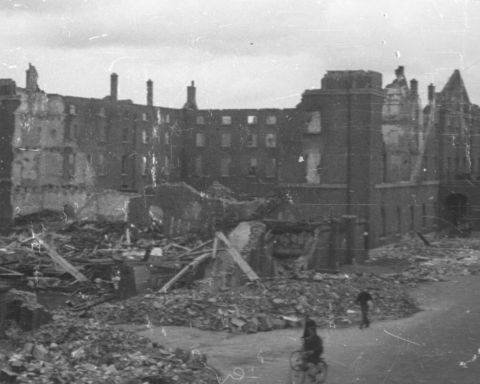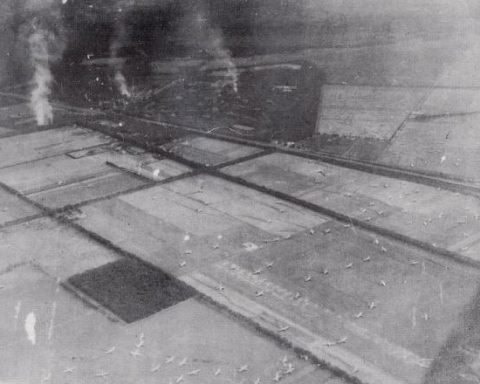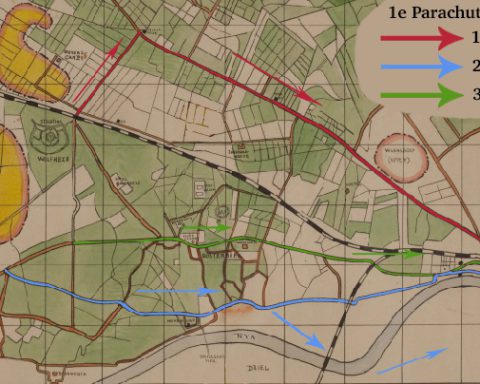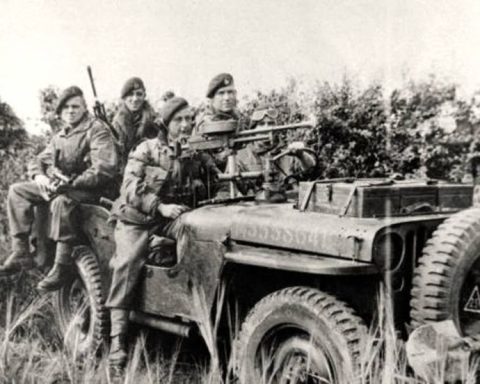One Dutch soldier was involved during the Battle of Arnhem. Captain Jacob “Jaap” Groenewoud was added as a liaison officer to the headquarters of the 1st Parachute Brigade. Jacob Groenewoud was killed on Tuesday September 19 near the park near the Rhine bridge that now bears his name: the Jacob Groenewoudplantsoen.
Groenewoud was an a-typical soldier. Groenewoud was an adventurer who loved drinking and women. It was a small, fragile man with bad eyes. He was wearing glasses with ‘jam jar’ glasses. For that reason, he was rejected for military service in the 1930s.
In 1938 he ended up in South Africa, where he worked as an accountant. When the war broke out, he went to Great Britain from South Africa. There he ended up with the Princess Irene Brigade, where he immediately stood out for his intelligence.
Jedburgh team
Groenewoud was appointed to take a reserve officer course. After being assigned to the British 18th Welch Regiment for a while, Groenewoud took a course in early 1944 to become a ‘Jedburgh officer’. As an officer in a Jedburgh team, named after a town in Scotland, Groenewoud was to be responsible in military operations for contacts with the resistance, sabotage operations, transportation arrangements and intelligence gathering.
It was a role that suited Groenewoud, an Amsterdam rustler.
Two Jedburgh teams were active during Operation Market Garden. Around Nijmegen, that was the team grouped around Dutch Lieutenant Arie Bestebreurtje, who was assigned to the 82nd American Airborne Division.
Jacob Groenewoud led the ‘Arnhem’ Jedburgh team, which also consisted of the Americans Harvey Todd and Carl Scott. The trio was part of the headquarters of the 1st Parachute Brigade.
On Sunday September 17 1944, the British soldiers from this headquarters and Colonel John Frost’s 2nd batallion advanced towards the Rhine Bridge.
Immediately after the landing, Groenewoud had already rustled a few cars with the inhabitants of Wolfheze that the British could use to transport supplies in the direction of Arnhem. Groenewoud then went in the direction of Arnhem together with Harvey Todd. Carl Scott, the third person from the Jedburgh team, was left at the landing zone to look for radio equipment.
At the beginning of the evening on Sunday, September 17, Groenewoud was located in the Rhine Pavilion aan de Onderlangs, on the west side. of Arnhem. There Jacob Groenewoud discovered German documents for the destruction of the ports of Rotterdam and Amsterdam.
Partly due to the discovery of Groenewoud, the Allies managed to prevent the destruction of the ports after Operation Market Garden.
Rhine Bridge
Groenewoud arrived late at night with the rest of the 1st Parachute Brigade headquarters at the Rhine Bridge. At that time, the route along the Rhine and the city center of Arnhem were still free from German soldiers.
Groenewoud and Todd took up residence in the attic of an office on Eusebiusbuitensingel. This large building was already defended by the Support Company of the 2nd Parachute Battalion, but there was still enough space.
Lieutenant Todd installed himself as a sniper with his Springfield telescopic sight rifle near a skylight. Groenewoud visited local residents and did what he was good at: rustling.
In the morning of Monday, September 18, a German reconnaissance unit attempted to break through the British lines using armored vehicles led by Viktor Gräbner via the south side of the Rhine Bridge. The German reconnaissance unit was completely destroyed.
Groenewoud and Todd had a good view of the German attack on the bridge from their high position in the office building. They also included British soldier Eric Robinson. He wrote of the attack:
“With me were an American and a Dutch officer. They shot like wild west cowboys. Boy, what could they shoot!”
Harvey Todd claimed he shot eight Germans with his sniper rifle; the highest score of the day.
Groenewoud dies
After the Germans closed the ring around the British positions at the Rhine Bridge, things started to look worse for the British at the bridge during Monday, September 18. Several attacks, including tank attacks and the aforementioned breakthrough from the south, were repelled. However, the German attacks seemed to intensify. The number of injured rose rapidly.
Meanwhile, Jacob Groenewoud had tried in various ways to make contact with the Elisabeth Gasthuis hospital in an attempt to obtain medical bandages and ambulances.
In the morning of Tuesday, September 19, Groenewoud heard from one of the residents that there was a GP two blocks away who had a telephone. Groenewoud decided to make an attempt together with Todd to reach the house of the doctor and to call the hospital from there.
Harvey Todd: “We were about half way and were standing against the wall of a building, ready to sprint across the road, when a German sniper fired at Captain Groenewoud. The bullet hit him in the forehead, then came out at the back. He was instant dead.”
Airborne at the bridge
After the war Jacob Groenewoud was buried between his fallen comrades in the Airborne cemetery in Oosterbeek. September 18, 1944 is listed on his gravestone as his date of death, but most likely this is incorrect.
Arnhem resident Piet van Leeuwen has spent years trying to rename a strip of grass at the corner of Oranjewachtstraat and Rijnkade into Jacob Groenewoudplantsoen. In 1994, this was indeed realized during the 50th anniversary of the Battle of Arnhem.
The story of Jacob Groenewoud is now also told in the information center ‘Airborne at the Bridge’, next to the Jacob Groenewoudplantsoen on the Rijnkade.
After the war Jacob Groenewoud was awarded the Military William Order; the highest military award in the Netherlands.
A few years ago, Martin Groenewoud wrote a (Dutch) book about the life of Jacob Groenewoud under the title ‘Almost Home’.

